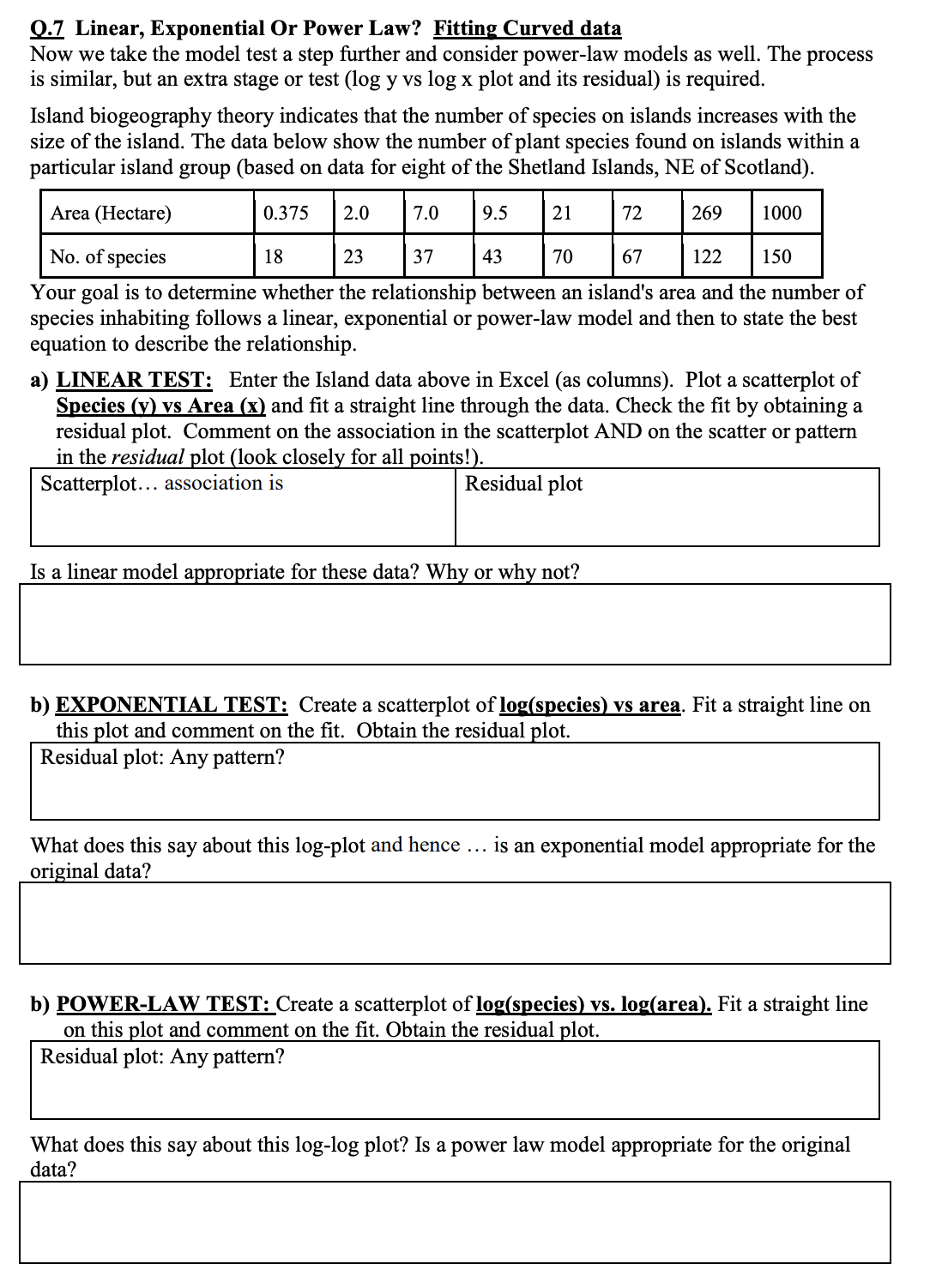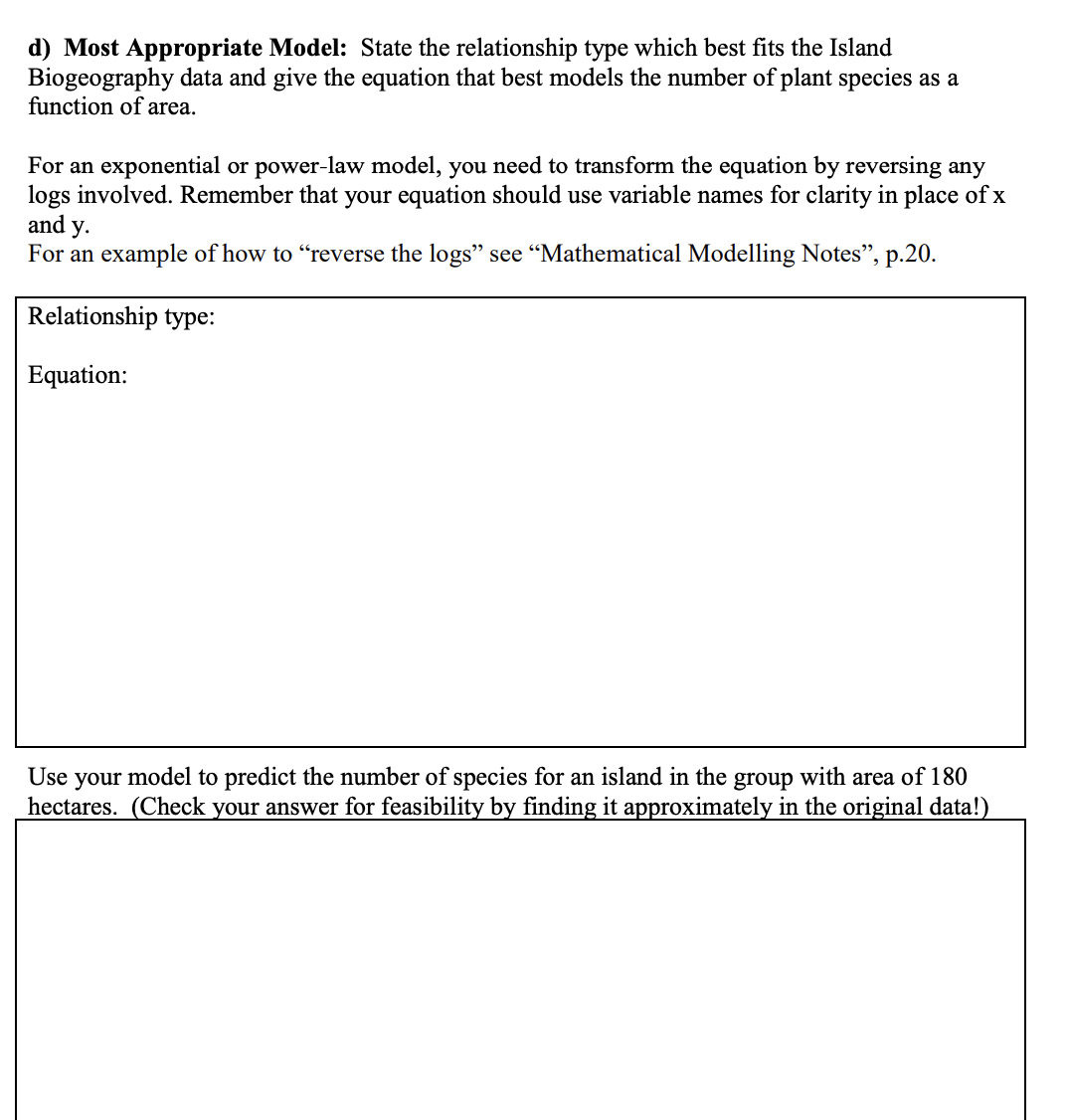Answered step by step
Verified Expert Solution
Question
1 Approved Answer
Q.7 Linear, Exponential Or Power Law? Fitting Curved data Now we take the model test a step further and consider power-law models as well.


Q.7 Linear, Exponential Or Power Law? Fitting Curved data Now we take the model test a step further and consider power-law models as well. The process is similar, but an extra stage or test (log y vs log x plot and its residual) is required. Island biogeography theory indicates that the number of species on islands increases with the size of the island. The data below show the number of plant species found on islands within a particular island group (based on data for eight of the Shetland Islands, NE of Scotland). Area (Hectare) No. of species 0.375 2.0 7.0 9.5 21 72 269 1000 18 23 37 43 70 67 122 150 Your goal is to determine whether the relationship between an island's area and the number of species inhabiting follows a linear, exponential or power-law model and then to state the best equation to describe the relationship. a) LINEAR TEST: Enter the Island data above in Excel (as columns). Plot a scatterplot of Species (y) vs Area (x) and fit a straight line through the data. Check the fit by obtaining a residual plot. Comment on the association in the scatterplot AND on the scatter or pattern in the residual plot (look closely for all points!). Scatterplot... association is Residual plot Is a linear model appropriate for these data? Why or why not? b) EXPONENTIAL TEST: Create a scatterplot of log(species) vs area. Fit a straight line on this plot and comment on the fit. Obtain the residual plot. Residual plot: Any pattern? What does this say about this log-plot and hence ... is an exponential model appropriate for the original data? b) POWER-LAW TEST: Create a scatterplot of log(species) vs. log(area). Fit a straight line on this plot and comment on the fit. Obtain the residual plot. Residual plot: Any pattern? What does this say about this log-log plot? Is a power law model appropriate for the original data? d) Most Appropriate Model: State the relationship type which best fits the Island Biogeography data and give the equation that best models the number of plant species as a function of area. For an exponential or power-law model, you need to transform the equation by reversing any logs involved. Remember that your equation should use variable names for clarity in place of x and y. For an example of how to "reverse the logs see "Mathematical Modelling Notes", p.20. Relationship type: Equation: Use your model to predict the number of species for an island in the group with area of 180 hectares. (Check your answer for feasibility by finding it approximately in the original data!)
Step by Step Solution
There are 3 Steps involved in it
Step: 1

Get Instant Access to Expert-Tailored Solutions
See step-by-step solutions with expert insights and AI powered tools for academic success
Step: 2

Step: 3

Ace Your Homework with AI
Get the answers you need in no time with our AI-driven, step-by-step assistance
Get Started


